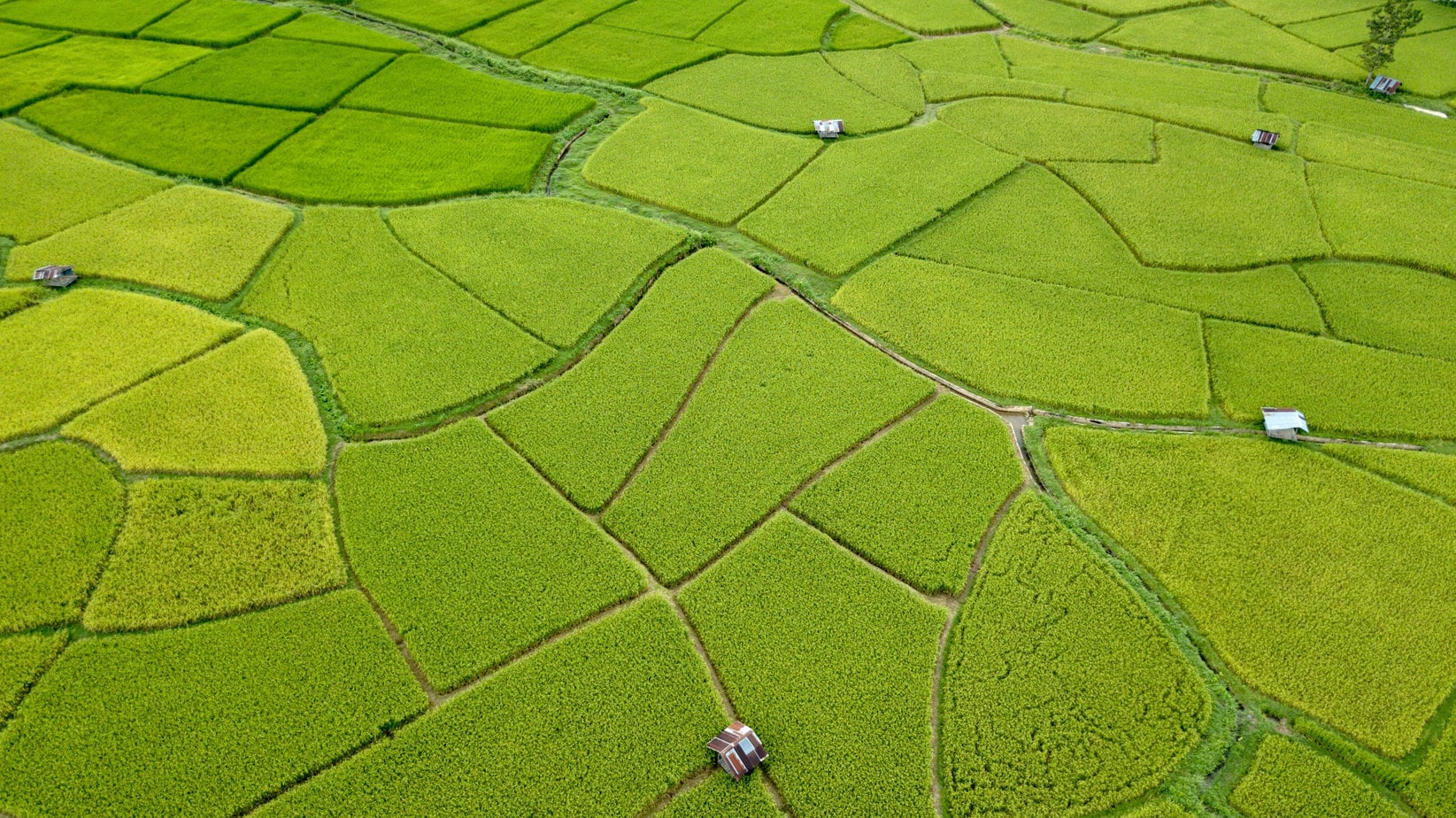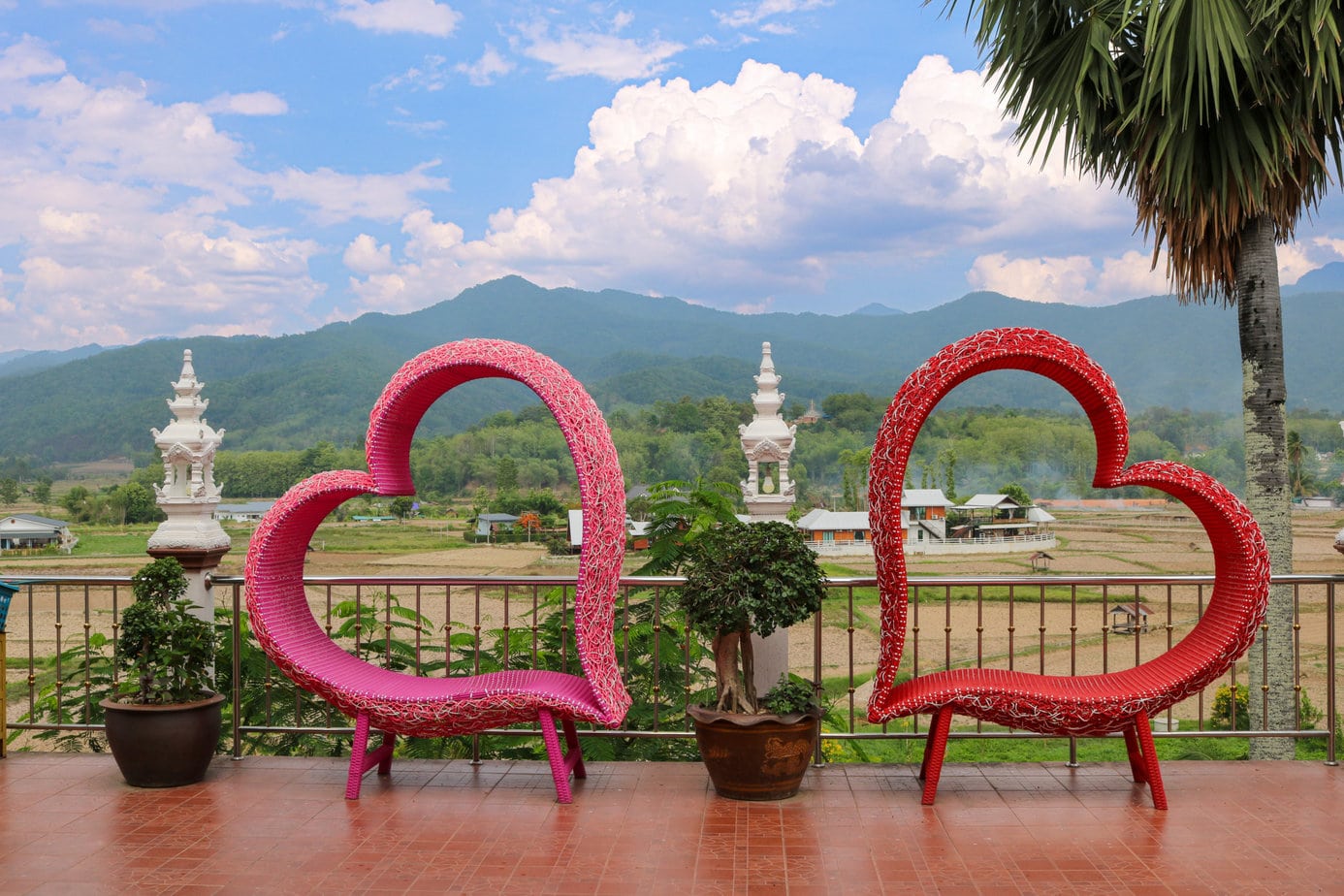Some posts on this site contain affiliate links. If you book or buy something through these links, I earn a small commission (at no extra cost to you). Take a look at my privacy policy for more information.
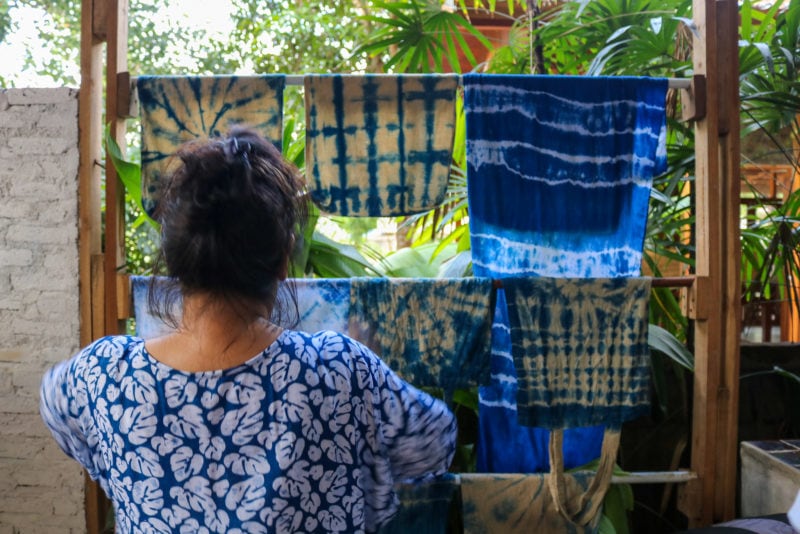
Some of the best things to do in Phrae, Thailand… a town of indigo clothing, teak wood houses, and traditional crafts.
Far in the north of Thailand, peaceful Phrae is far too often overlooked by visitors.
The small capital of a sparsely populated and sleepy province of the same name, Phrae feels fairly “off the beaten path”. Especially when compared with north Thailand’s more famous cities such as Chiang Mai and Chiang Rai.
But it’s time to put Phrae on your Thailand bucket list! If you love heritage, traditional crafts, great food, and laid-back vibes, this is the town for you! Here are some of the top things to do during your visit…
Disclaimer – my trip to Phrae was supported by the Tourism Authority of Thailand. As always, all words and opinions are 100% my own.
What is Phrae Known For?
Just over a century ago, Phrae was the wealthy heart of a booming teak logging industry. Striking teak wood mansions still dot the town, but the bustle of trade is long gone. Instead, this is a quiet little town beloved for its sleepy vibes, fabulous coffee shops, and traditional crafts.
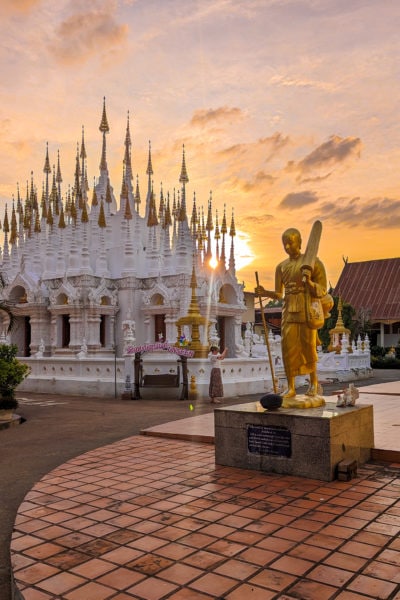
The most famous local craft is Mo Hom: northern Thailand’s iconic indigo-dyed textiles.
Spend five minutes in Phrae and you’ll quickly realise that this natural blue dye is an intrinsic part of the town’s identity. Indigo-dyed clothes and textiles are in every shop, on every street. Almost every local wears it – even the pets!
Shopping, craft-making, temple-hopping, or discovering local history… whatever you’re into, there are plenty of fun things to do in Phrae to keep you busy. Just be sure to spend some time relaxing and enjoying the town’s chilled-out pace of life, too!
Quick List: Top Things to do in Phrae (if you’re short on time)
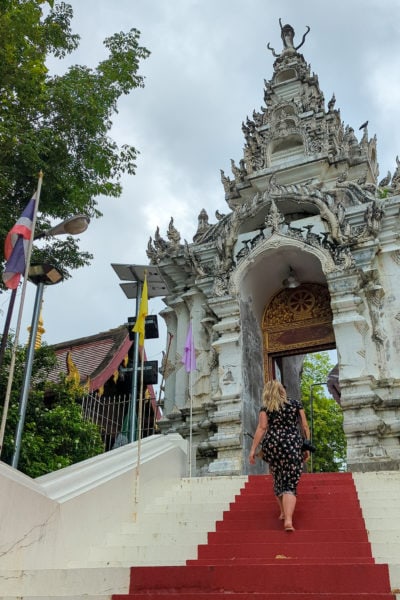
If you only have a day or two in the city – here’s a quick list of the can’t-miss attractions in Phrae, Thailand. You’ll find more info on each one in the next section.
- Take a tram tour of the city centre.
- Discover the tradition of Mo Hom natural indigo dye and take a tie-dye workshop.
- Don’t miss Wat Phra That Cho Hae temple.
- Look around the historic Governer’s Palace (Khum Chao Luang).
12 Things to Do in Phrae, Thailand
1. Take a Tram Tour of the City Centre
For the perfect introduction to Phrae and a quick overview of the city’s top attractions, hop aboard one of the Tram Tours of the city centre.
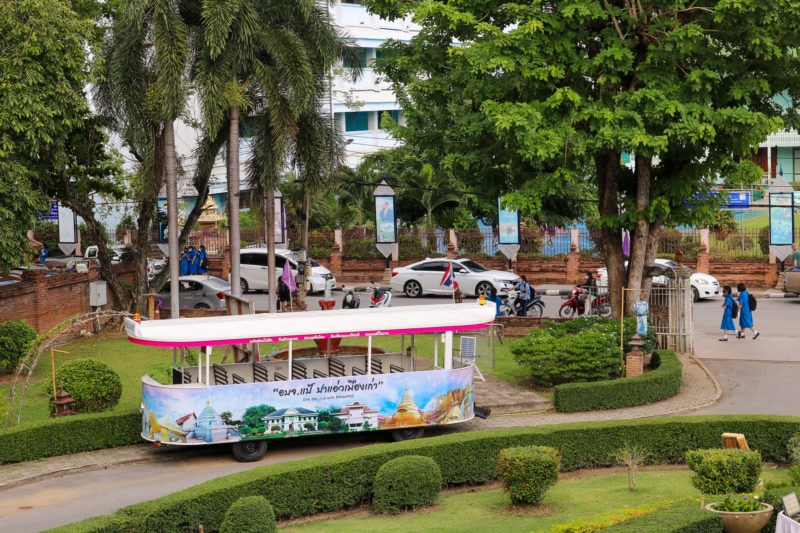
These cute little open-sided trams are one of the best things to do in Phrae and a great way to see the highlights of the town in a single afternoon. They’ll take you past most of the major sights and temples, stopping at some so you can get down and take photos.
Good to Know: The tram tours depart from outside Khum Chao Luang Museum (see section 8). The driver’s commentary is in Thai, but it’s still a fun way to explore and you’ll get a good overview. Top tip: drop pins on your Google Maps to remind yourself which spots you want to come back to while you’re in Phrae.
2. Discover the Tradition of Thai Indigo at Baan Thung Hong Village
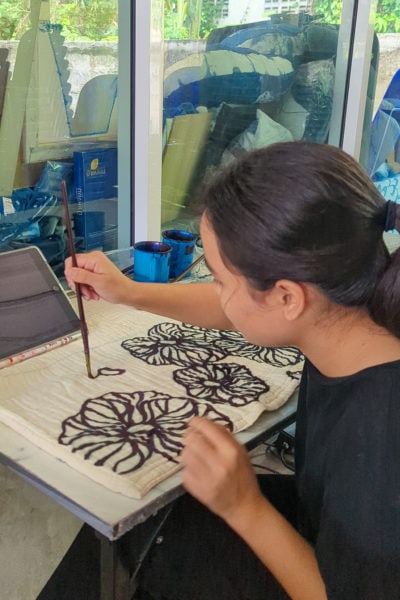
One of the things Phrae is most famous for is the art of Mo Hom indigo dye. You’ll see people wearing indigo-dyed clothes ALL over northern Thailand. Mo Hom clothing is often nicknamed “Thai denim” because it’s so prolific!
Mo Hom was brought to Phrae by migrants from Puen in Laos. The Puen people were farmers, and used the hom plant which grows in the nearby mountains to create a dye that offered natural sun protection. This natural dye became one of Phrae’s most popular exports, from hand-painted textiles to simple tie-dyed clothing.
Thung Hong, a village on the outskirts of Phrae, is the home of Thai indigo. Here, you’ll find a small market and many shops and stalls selling a huge variety of textiles and clothes.
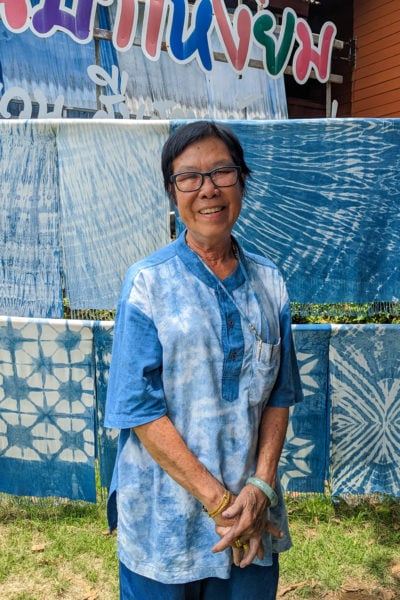
Ban Pa Ngiam is one of the original workshops, so is one of the best places to learn more. The shop is run by Prapapan Sritrai – aka Auntie Ngiam, a 3rd generation craftswoman who learned how to make the dye from her grandmother.
Visit to see artisans at work creating indigo-dyed products – and to shop for beautiful hand-made products. You can also take a workshop to make your very own tie-dyed indigo souvenir. There’s a range of great patterns to choose from – some simple, some more complicated – so you can make a scarf, bag, or t-shirt that’s completely unique.
3. Take a Tye-Dye Workshop at Baan Matjai Homemade & Cafe
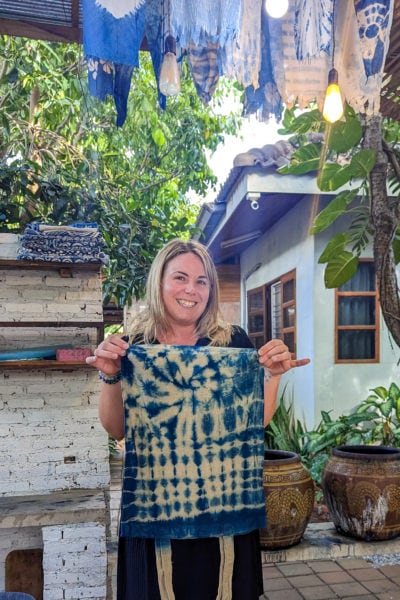
There’s another great place to try Mo Hom indigo dying for yourself. Family-run Banmatjai (also called Baan Matjai) is a lovely workshop, cafe and boutique store just north of Phrae.
If you love arts and crafts, this is the place to come! As well as indigo workshops, they also offer pottery painting sessions – and have a gorgeous coffee shop where you can relax (while you decide just how many indigo pieces you want to buy!).
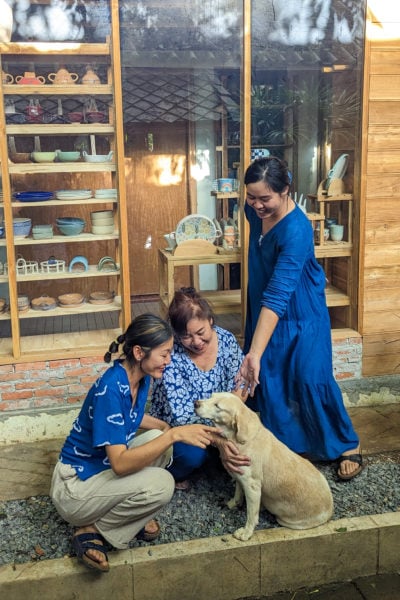
I had an absolute blast at the Banmatjai indigo workshop. The lovely ladies who run the shop will help you choose and shape your design (I recommend keeping it simple if it’s your first try!). Then, you simply dip it into the dye, rinse it off, and hang it up to dry.
Head for a coffee while you wait – or check out the beautiful boutique in search of sliiiightly more professional indigo goods! The workshop costs 150 THB and it’s a really fun way to make a unique souvenir of your time in Phrae.
4. Pay a Visit to Wat Phra That Cho Hae Temple
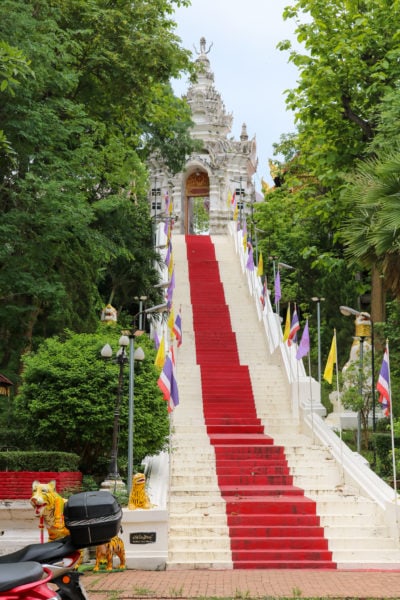
Phrae is home to one of the most important Buddhist temples in northern Thailand: Wat Phra That Cho Hae. The huge golden chedi (stupa) in the temple complex is said to house the hair and left elbow relics of Lord Buddha – so this is an important pilgrimage site for Thai Buddhists and the centre of Buddhism in Phrae.
The 33m-high chedi was built between 1336 and 1338 and is covered in bright brass sheets coated with gold inlay. The name “Cho Hae” name refers to a traditional satin fabric which was wrapped around the ancient pagoda when it was first constructed.
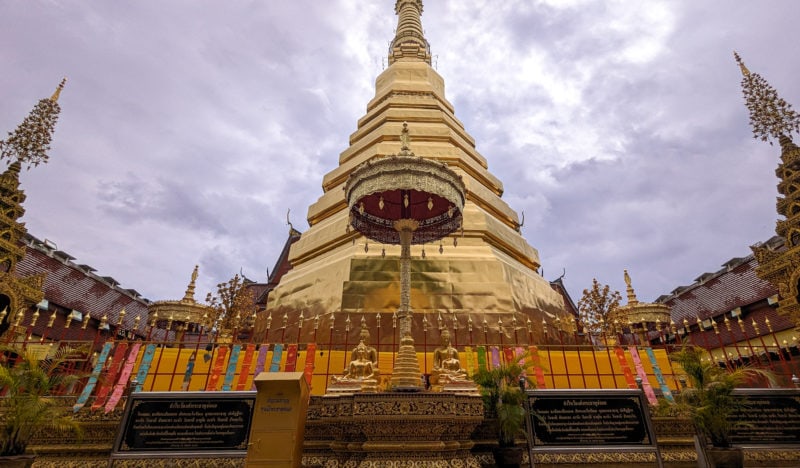
If you can, try to time your visit with Wat Phra That Cho Hae Festival, held during the fourth lunar month of the year (usually around February or March). Devotees walk clockwise around the chedi holding lit candles. Outside, a large fair is held around the temple with music, food, and celebrations.
5. See Traditional Bamboo Hat Making at Hommai Baandin
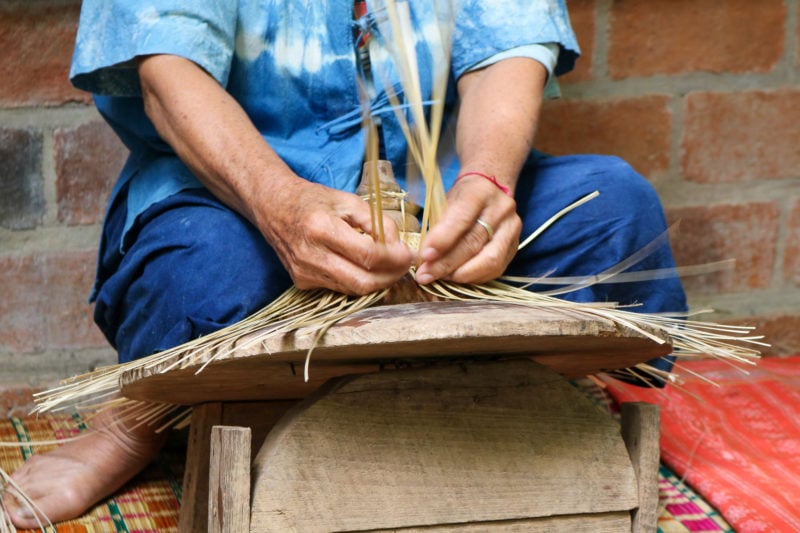
Uncover more local crafts at Hommai Baandin in Ban Na Laem, a small village on the outskirts of Phrae. Here, you can see the art of traditional bamboo and palm leaf hat making.
Owner Kris founded Hommai Baandim when she realised that the heritage of Lanna-style hat-making was almost lost. During the Covid pandemic, Kris came home to look after her mum – and realised that her village was the only place in Thailand that still make this hat.
She formed a small collective, Kublon Community Enterprise, to preserve this – along with other traditional crafts. There’s a small restaurant serving delicious local cuisine, hat-making demonstrations, and even a small workshop so you can discover the craft for yourself.
6. Learn about Lanna History at the Komol Antique Textile Museum
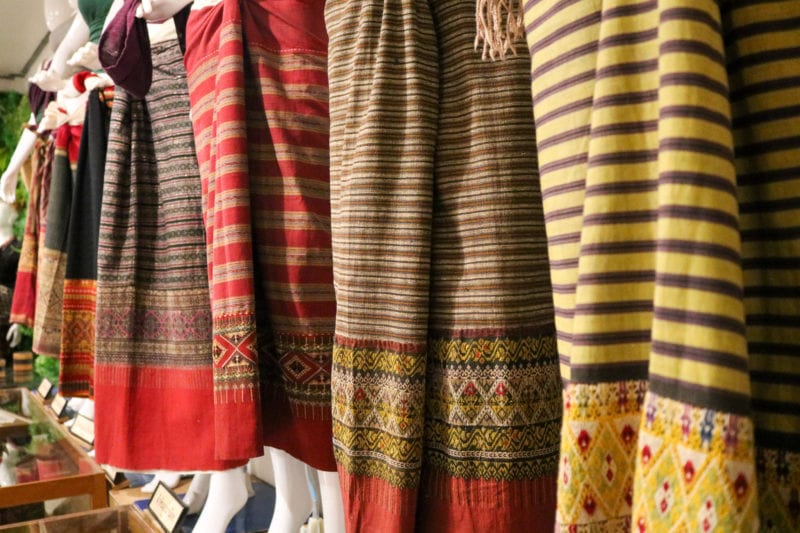
Situated about 45 minutes drive west of Phrae town centre, in the nearby Long District, Komol Phaboraan Textile Museum is worth a day trip for anyone interested in learning a little more about local history and culture.
Phrae was once part of the Lanna Kingdom, along with nearby Nan province and most of Northern Thailand. Komol Museum features a collection of historic fabrics from the Lanna people, some of which are over 200 years old and beautifully preserved.
Owner Komol Phanichpan noticed that some of these fabrics and styles were dying out, so opened the museum to preserve them. The collection has expanded over the years and includes several interesting pieces, including traditional dresses worn in Thai films and the sarong worn by Bui Simon – the Thai Miss Universe winner in 1988.
DON’T miss the basement rooms which house the most unusual exhibit in the museum: a collection of Barbie dolls. It started as a collection of dolls in hand-made outfits showcasing different local costumes. But the unique exhibit grew to include Barbies from the iconic Dolls of the World collection, as well as numerous pop culture dolls such as Marvel and Harry Potter characters!
7. See the Reclining Buddha and Giant Tortoise at Wat Phong Sunan
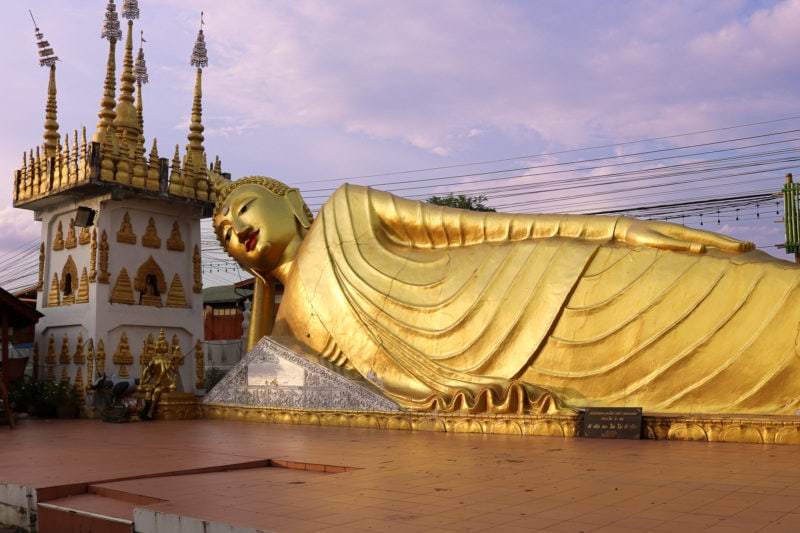
There are many beautiful and historic temples to visit in Phrae’s small, peaceful town centre. But if only have time to visit one, make it Wat Phong Sunan.
This beautiful and eclectic temple complex has several intriguing features. There’s a Buddha statue said to be over 560 years old, an impressive golden reclining Buddha statue, and an enormous golden turtle statue.
But perhaps most eye-catching is the elaborate image hall, which is covered with a forest of 108 white spires – each topped with a gold cone. Visit around sunset to see these catching the light beautifully.
8. Step Back in Time at the Phrae Governors Palace (Khum Chao Luang)
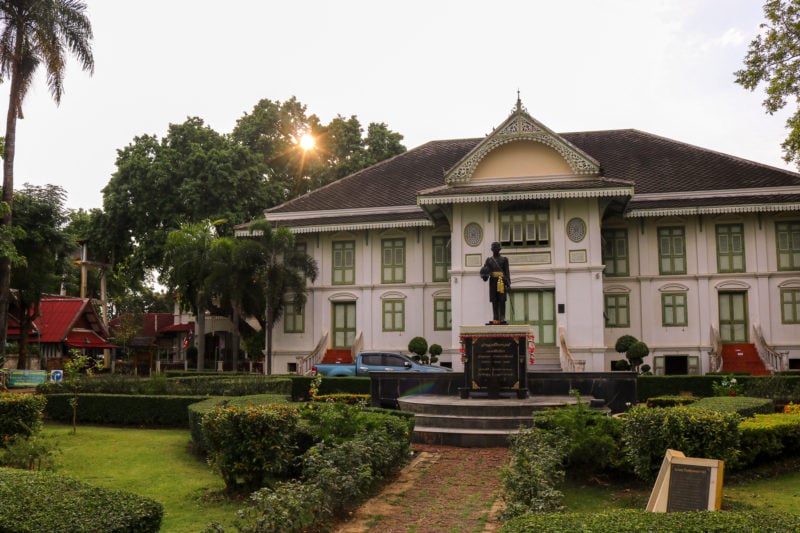
Khum Chao Luang, the former Governor’s Palace, is a great place to learn about Phrae’s history. This impressive mansion was built in 1892 for Chao Luang, the last ancestral ruler of Phrae. He lived there until 1902 when Phrae’s independence came to an end and he fled to exile in Luang Prabang.
Like many of Phrae’s historic mansions, the palace is crafted largely from local teak wood (see section 9). Phrae’s teak industry was booming at the time, and Chao Luang had become very wealthy off the back of the teak trade – as you can see from the extravagant furnishings and artefacts found throughout the property.
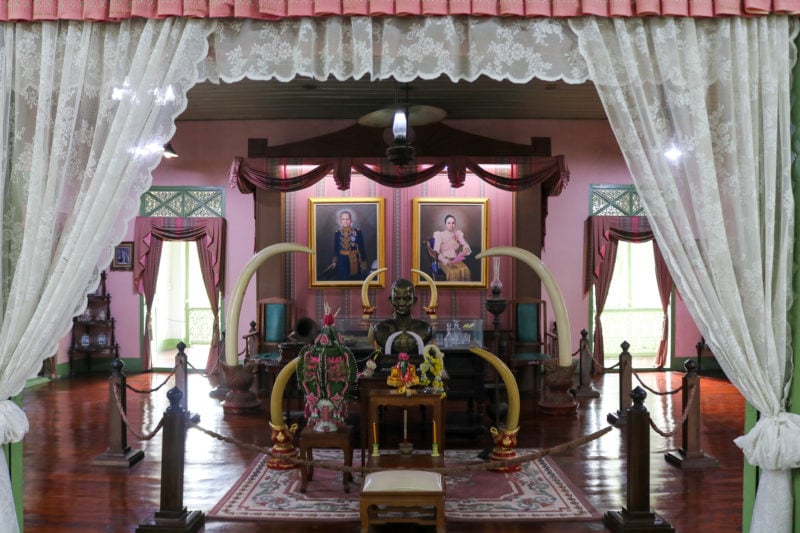
There’s a darker history here, too. The basement beneath the mansion contains a small jail with three low-ceilinged cells. Apparently, these were used to imprison slaves. One of the rooms above has a small trapdoor in the wooden floor to allow food to be passed down to the prisoners below.
9. Discover Phrae’s Historic Teak Buildings
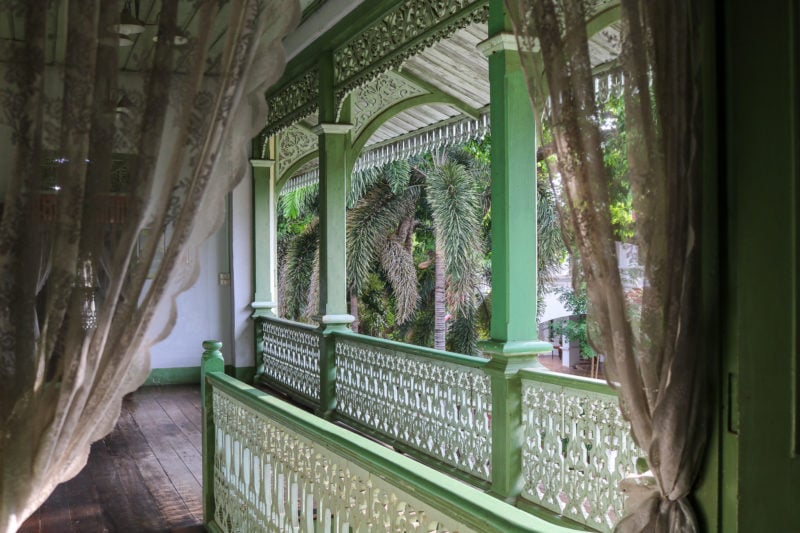
A century ago, Phrae was the centre of a thriving teak logging industry. Trade with European powers at the start of the 19th century brought a huge boom to the local economy – and many local nobles became very wealthy from it, building extravagant, European-influenced wooden mansions.
Today, Phrae’s teak trading legacy still has a strong presence throughout the town, which is dotted with historic teak buildings. One of the most notable is the Governer’s Palace (see above), but there are many more to look out for as you explore Phrae town centre.
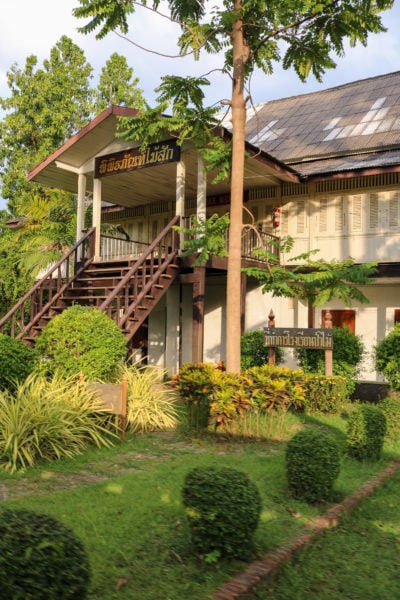
To learn more, head to the Teak Museum. Consisting of three teak buildings which previously belonged to the East Asiatic Company, the museum delves into the history of teak logging. There are also displays of locally crafted teak products such as arts, pictures, and crafts work.
More teak buildings to look out for:
- Wat Chom Sawan – see section #10
- Vongbury House Museum – see section #11
- Ban Prathap Chai – completed in 1976.
- Gingerbread House Gallery – shops, a cafe, an art gallery, and a B&B in a traditional teak wood house.
- Baan Thep Museum – a historic mansion converted into a museum.
- Wichai Racha Residence – a beautiful, red-hued mansion built in 1898 by Cantonese artisans.
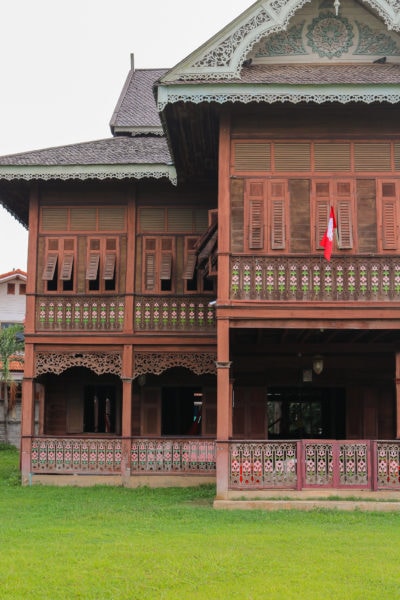
10. Visit the Teak Temple of Wat Chom Sawan
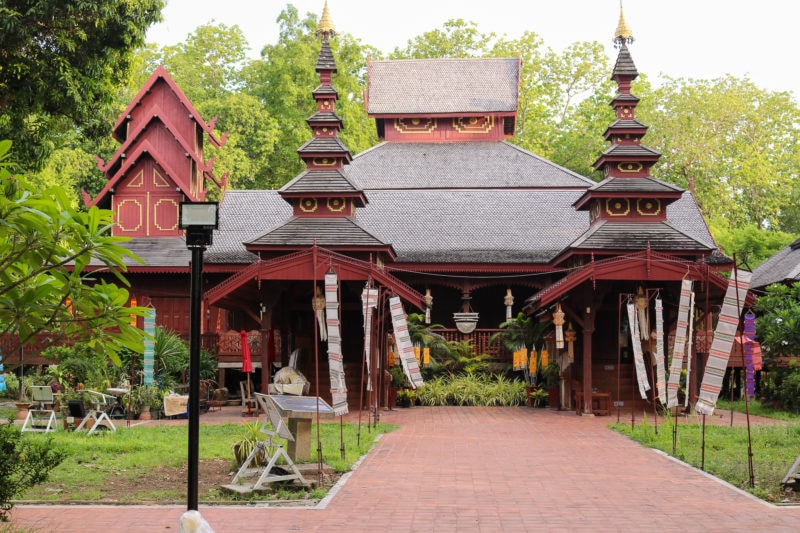
One of the most iconic teak buildings in Phrae is Wat Chom Sawan (or Wat Jom Sawan) a Burmese-style temple built largely from teak wood. Construction began in 1894 and was completed in the early 1900s, so there’s a lot of history here.
Inside are colourfully painted teak wood ceilings and beautifully carved wooden pillars. Look out for the “Luangpho San”: a figure woven from bamboo and covered with gold leaves over black lacquer.
11. Check out Vongbury House Museum
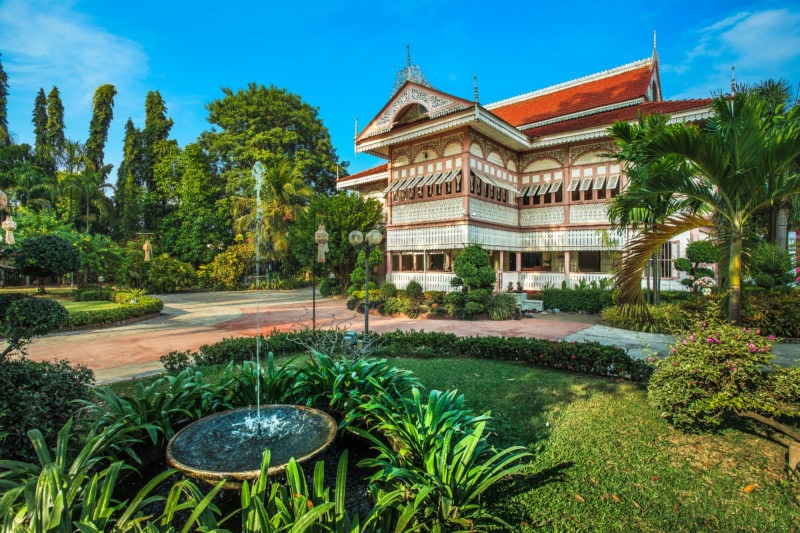
There’s one more notable teak wood building to visit while you’re in Phrae. Khum Vongbury (or Wongburi) Museum is housed in a stunning pink-and-white teak mansion dating from 1907.
I only visited the outside of the property, which is gorgeous in its own right, with long verandahs, rows of shuttered windows, and elaborate wood carvings.
Inside is a small museum showcasing the heritage of the family who built and owned the house, with artefacts from the 19th and early 20th centuries including furniture, art, and silverware.
12. Escape to Phae Mueang Phi Forest Park
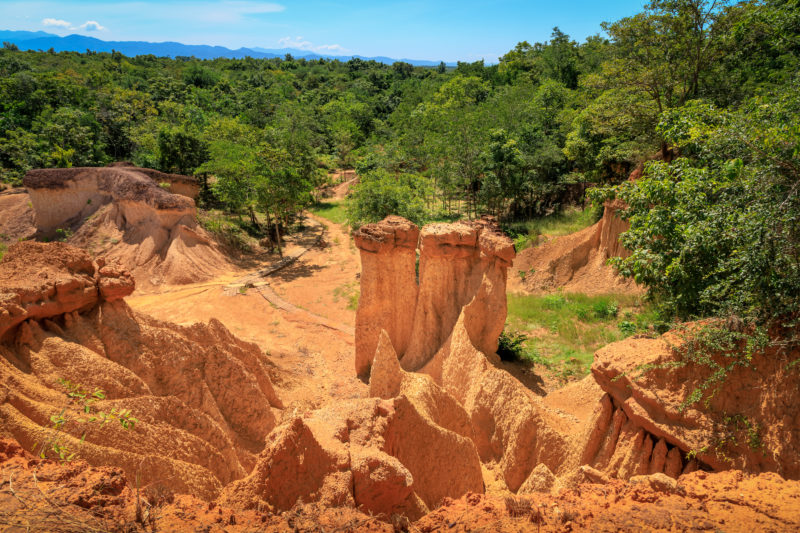
Escape into nature with a trip to Phae Mueang Phi Forest Park, located about 12km north of Phrae’s centre. The forest park is best known for its unusual rock formations, with sandstone columns carved by years of erosion – some up to 30m high.
Phae Mueang Phi roughly translates as “Ghost Town Grove” – because of the spirits that live in the forest. According to local legend, an elderly woman found some silver and gold in the forest years ago. When she tried to take it home, the forest spirits caused her to get lost until she put the treasure back.
Sadly, I didn’t have time to visit Phae Mueang Phi on my trip – but as one of Phrae’s most popular attractions, I’d say it’s a must-do. The easiest way to reach the park would be by renting a moped, but you could also take a taxi – just make sure to pre-book the return journey.
How to Get to Phrae in Northern Thailand
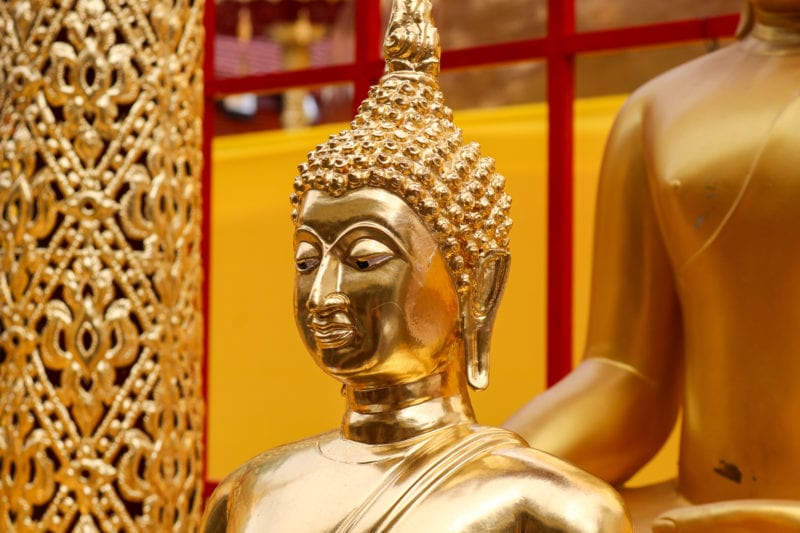
Air: There is an airport in Phrae, and it used to have domestic flight connections with Bangkok. Unfortunately, these flights have not yet resumed since the pandemic. The closest airport is in nearby Nan, about two-hour drive from Phrae. There are twice-daily flights from Bangkok to Nan via AirAsia.
Train: There is no train station in Phrae itself, but there is one at nearby Den Chai. This is about 30 minutes from Phrae centre and there are regular transport services between the two. Den Chai is on the main Bangkok – Chiang Mai train route so there are regular services.
The train from Bangkok to Den Chai takes 8 to 9 hours. Tickets start from around 250 THB ($7 USD). From Chiang Mai to Den Chai, the journey time is around 4 hours, with tickets from about 150 THB ($4 USD). Click here to search train times and ticket prices on 12Go-Asia, my most trusted booking platform.
Bus: Phrae has decent bus connections with the rest of Thailand. From Chiang Mai, the journey time is around 4 hours and costs around 150 THB ($4 USD). A bus from Bangkok to Phrae can take anything from 7 to 12 hours, with prices varying depending on the service.
I always recommend using 12Go-Asia to check times and prices and to book tickets. They even have photos of the services so you know exactly what to expect!
Final Thoughts
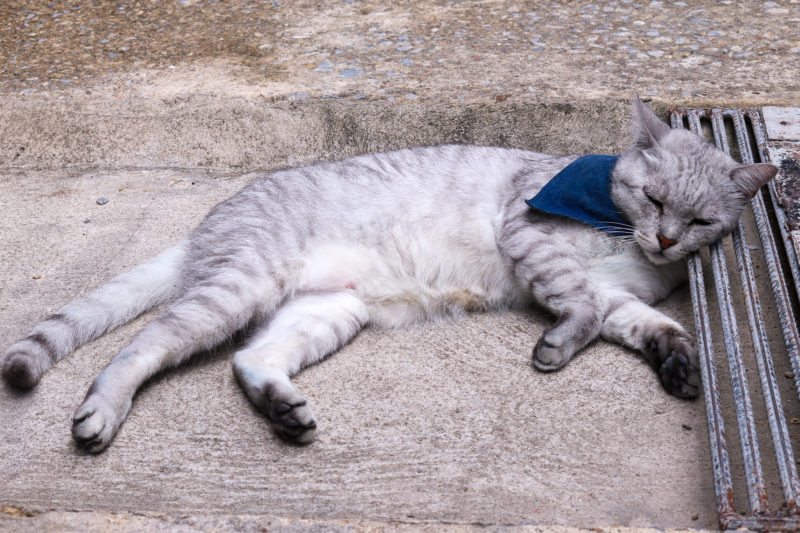
It may be a relatively small town in a far-flung northern province, but Phrae has a lot to offer visitors. The whole province has a rich history and a beautiful culture to discover.
Phrae’s traditional arts and crafts are what set the area apart. The region’s heritage feels very much alive, especially when you meet locals like Kris at Hommai Baandim and the ladies behind Banmatjai, who are fighting to keep the province’s traditions alive and keep them current.
A few years ago, the Phrae Craft Fair was launched to showcase and celebrate the unique crafts and skilled artisans that make this province such a special place. It’s held annually over the first weekend in December – so if you’re in Thailand at the right time, make sure to head up to Phrae for the Craft Fair.
With so much to see and do in such a small town, you could easily spend several days exploring Phrae and the surrounding province. Come for the heritage, the history, the teak mansions, and the shopping… but stay for the town’s wonderfully laid-back vibes!
Read More
Things to do in Nan Province Thailand
Everything you Need to Know about Nan Province
Are there any more great things to do in Phrae, Thailand that I’ve missed from this list? Scroll down to leave a comment!

